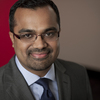Assessing the Implementation Challenges Associated with Emerging Technologies

To download a copy of the entire special report, click on this link.
If you would like to read question one from this five-part series, click on this link. For question two, click on this link.
Participants:
- Carol Dow, principal, Vanguard Information Technology
- David Saul, chief scientist, State Street
- Patrick Angeles, chief architect, financial services, Cloudera
- Todd Gottula, executive vice president and CTO, Advent Software
- Oskar Mencer, CEO, Maxeler Technologies
- Roji Oommen, managing director, Financial Services, CenturyLink
- Anthony Tassone, CEO, Green Key Technologies
Question Three: What are the challenges that need to be addressed when capital markets firms consider implementing emerging technologies, such as those that address the challenges around big data, the move to mobile working, and cloud-based initiatives? What are the pros and cons that firms must weigh up when evaluating such products and services?
Roji Oommen, managing director, Financial Services, CenturyLink: We think the single biggest obstacle for capital markets firms is to migrate away from legacy applications. What we hear most in the market is that most new applications are built, whenever possible, to be "cloud friendly."  Unfortunately, most enterprises maintain massive legacy systems, which often make migrating away from them a difficult and complicated proposition. In addition, network connectivity has become a major concern to capital markets firms since elastic workloads and data sets require lots of bandwidth with relatively low latency between computing centers. We have been investing heavily in 100G fiber connectivity between all 55 of our datacenters, customer facilities, and other key datacenters.
Unfortunately, most enterprises maintain massive legacy systems, which often make migrating away from them a difficult and complicated proposition. In addition, network connectivity has become a major concern to capital markets firms since elastic workloads and data sets require lots of bandwidth with relatively low latency between computing centers. We have been investing heavily in 100G fiber connectivity between all 55 of our datacenters, customer facilities, and other key datacenters.
Finally, we expect that many private IaaS cloud initiatives will fall by the wayside in the medium term. Despite the advantages of internal deployment, seeing first-hand how applications behave and giving internal business users exposure to an elastic environment, we think this model is only viable for the largest and most sophisticated firms. Over the long haul, we think the economies of scale for external service providers will continue to improve as cloud adoption increases, putting tremendous pressure on purely private models.
"Challenges include security and the maturity of the technology. With cloud-based technologies, one of the primary concerns is data security. It is important to understand the security risks around cloud and how those can be mitigated or avoided." ─ Carol Dow, principal, Vanguard Information Technology.
Oskar Mencer, CEO, Maxeler Technologies: The pros are that more data can lead to more information and new financial products. The cons are that stably transitioning to new technologies can be a challenging process for large financial organizations.
For example, for the Maxeler Risk Analytics and Low-Latency Trading Solution, the pros are that more information can be included into trading decisions, leading to more stable trading behavior and less risk in the short term and long term for the operation. The cons are that a transition to a combined trading and risk installation can take some effort and requires risk and trading teams to work closely to integrate the solution.
Todd Gottula, executive vice president and CTO, Advent Software: The technology landscape is more complex than ever, with a growing pool of emerging technologies and start-ups. At the same time, decisions involving building and selecting technologies require major financial and time commitments. One of the biggest challenges is the significant risk associated with building solutions in-house, including licensing, buying, and  implementing technology components yourself.
implementing technology components yourself.
A second significant challenge facing capital markets firms is security and data privacy concerns. Moving data and allowing access to data sets that normally would have been highly protected inside the firm means that firms now have to worry about how that personally identifiable data is encrypted and protected, and ensure it is securely stored and audited wherever it goes.
Both these challenges are driving firms away from becoming "builders" and toward becoming "buyers" who reach out to providers like Advent to make those technology decisions and certify the security of the data for them. Across the capital markets industry, firms are rethinking the way they traditionally solve their own problems because there is so much inherent risk involved in going it alone.
Carol Dow, principal, Vanguard Information Technology: Challenges  include security and the maturity of the technology. With cloud-based technologies, one of the primary concerns is data security. It is important to understand the security risks around cloud and how those can be mitigated or avoided. Another challenge to consider is the maturity of the technologies. For example, with unified communications, the goal is to have a "Swiss Army knife" of communication technologies; however, a key consideration is whether different vendors are compatible with one another. It is important for firms to weigh up whether these solutions have a place in the firm, which will make them more competitive.
include security and the maturity of the technology. With cloud-based technologies, one of the primary concerns is data security. It is important to understand the security risks around cloud and how those can be mitigated or avoided. Another challenge to consider is the maturity of the technologies. For example, with unified communications, the goal is to have a "Swiss Army knife" of communication technologies; however, a key consideration is whether different vendors are compatible with one another. It is important for firms to weigh up whether these solutions have a place in the firm, which will make them more competitive.
David Saul, chief scientist, State Street: The big challenge that I see ─ and this applies to the cloud, to data, to mobility, and social networking ─ is information security. It always seems to lag the base technology itself. For security, the cloud needs to improve when it comes to identity. When you're  running in the cloud-unlike running on a traditional environment where you pretty much know who's running there because of their physical location-that model doesn't work in the cloud. I think my greatest fear is that we'll have some kind of data breech in the cloud that will set us back because in their haste to gain the benefits, people haven't spent the necessary time on information security, risk management, and compliance. That's the greatest risk. But I'm a glass-half-full person. There are technology solutions to guard against that, but they just don't have the immediate financial return of some other technologies, so they tend to come second.
running in the cloud-unlike running on a traditional environment where you pretty much know who's running there because of their physical location-that model doesn't work in the cloud. I think my greatest fear is that we'll have some kind of data breech in the cloud that will set us back because in their haste to gain the benefits, people haven't spent the necessary time on information security, risk management, and compliance. That's the greatest risk. But I'm a glass-half-full person. There are technology solutions to guard against that, but they just don't have the immediate financial return of some other technologies, so they tend to come second.
Patrick Angeles, chief architect, financial services, Cloudera: One of the fundamental challenges is addressing the communications gap around big data between IT and the C-suite. IT is seeking a solution to the business challenge of storing massive amounts of data and the C-suite values solutions that have an immediate impact on corporate performance. Hadoop is seen as a common denominator because it can be used to store all types and amounts of data and be used to extract meaningful insights. Hadoop is increasing awareness, building understanding, and bridging the gap between IT and senior business executives. Within IT there are challenges as well. The move from legacy technologies to more innovative technologies, such as Hadoop, has created a skills gap among IT professionals. Legacy environments require a unique skills set, while new emerging technologies have given rise to data scientists. The deficit of skilled professionals that can help companies make use of big data to available positions across every major industry is growing. Cloudera is actively addressing this skills gap and making data technology education more broadly available.
Within IT there are challenges as well. The move from legacy technologies to more innovative technologies, such as Hadoop, has created a skills gap among IT professionals. Legacy environments require a unique skills set, while new emerging technologies have given rise to data scientists. The deficit of skilled professionals that can help companies make use of big data to available positions across every major industry is growing. Cloudera is actively addressing this skills gap and making data technology education more broadly available.
To date, Cloudera has trained more than 40,000 developers, administrators, analysts, and data scientists on the Hadoop platform.
Ensuring that stakeholders are equipped with the right knowledge, education, training and tools, is imperative. Additionally, so is ensuring the security of the information as new technologies are put in place. Greater access to information at all levels-by users and IT, requires greater oversight and greater security. Governance and compliance needs to be a key consideration.
Anthony Tassone, CEO, Green Key Technologies: I think it's important to test your assumptions in a very isolated environment and create a plan to migrate toward production in incremental stages. For example, a mobile  workforce may seem exciting for a sales team but could be a nightmare for compliance departments. It is important that the technology is secured and processes put in place prior to allow employees to begin to communicate outside the walls of the office. There have been major regulatory initiatives that now mandate voice recording, trade capture, and trade-retention capabilities. It is critical that employees operate within a framework that allows for the necessary data to be captured and retained remotely as well as internally.
workforce may seem exciting for a sales team but could be a nightmare for compliance departments. It is important that the technology is secured and processes put in place prior to allow employees to begin to communicate outside the walls of the office. There have been major regulatory initiatives that now mandate voice recording, trade capture, and trade-retention capabilities. It is critical that employees operate within a framework that allows for the necessary data to be captured and retained remotely as well as internally.
Only users who have a paid subscription or are part of a corporate subscription are able to print or copy content.
To access these options, along with all other subscription benefits, please contact info@waterstechnology.com or view our subscription options here: http://subscriptions.waterstechnology.com/subscribe
You are currently unable to print this content. Please contact info@waterstechnology.com to find out more.
You are currently unable to copy this content. Please contact info@waterstechnology.com to find out more.
Copyright Infopro Digital Limited. All rights reserved.
You may share this content using our article tools. Printing this content is for the sole use of the Authorised User (named subscriber), as outlined in our terms and conditions - https://www.infopro-insight.com/terms-conditions/insight-subscriptions/
If you would like to purchase additional rights please email info@waterstechnology.com
Copyright Infopro Digital Limited. All rights reserved.
You may share this content using our article tools. Copying this content is for the sole use of the Authorised User (named subscriber), as outlined in our terms and conditions - https://www.infopro-insight.com/terms-conditions/insight-subscriptions/
If you would like to purchase additional rights please email info@waterstechnology.com
More on Emerging Technologies
Man Group CTO eyes ‘significant impact’ for genAI across the fund
Man Group’s Gary Collier discussed the potential merits of and use cases for generative AI across the business at an event in London hosted by Bloomberg.
BNY Mellon deploys Nvidia DGX SuperPOD, identifies hundreds of AI use cases
BNY Mellon says it is the first bank to deploy Nvidia’s AI datacenter infrastructure, as it joins an increasing number of Wall Street firms that are embracing AI technologies.
This Week: Linedata acquires DreamQuark, Tradeweb, Rimes, Genesis, and more
A summary of some of the latest financial technology news.
Systematic tools gain favor in fixed income
Automation is enabling systematic strategies in fixed income that were previously reserved for equities trading. The tech gap between the two may be closing, but differences remain.
Euronext microwave link aims to cut HFT advantage in Europe
Exchange plans to level playing field between prop firms and banks in cash equities with cutting edge tech.
Why recent failures are a catalyst for DLT’s success
Deutsche Bank’s Mathew Kathayanat and Jie Yi Lee argue that DLT's high-profile failures don't mean the technology is dead. Now that the hype has died down, the path is cleared for more measured decisions about DLT’s applications.
‘Very careful thought’: T+1 will introduce costs, complexities for ETF traders
When the US moves to T+1 at the end of May 2024, firms trading ETFs will need to automate their workflows as much as possible to avoid "settlement misalignment" and additional costs.
Waters Wrap: Examining the changing EMS landscape
After LSEG’s decision to sunset Redi, Anthony examines what might lie ahead for the EMS space.
Most read
- Sell-Side Technology Awards 2024: All the winners
- Sell-Side Technology Awards 2024: Best sell-side front-office platform—Bloomberg
- Deutsche Börse democratizes data with Marketplace offering








